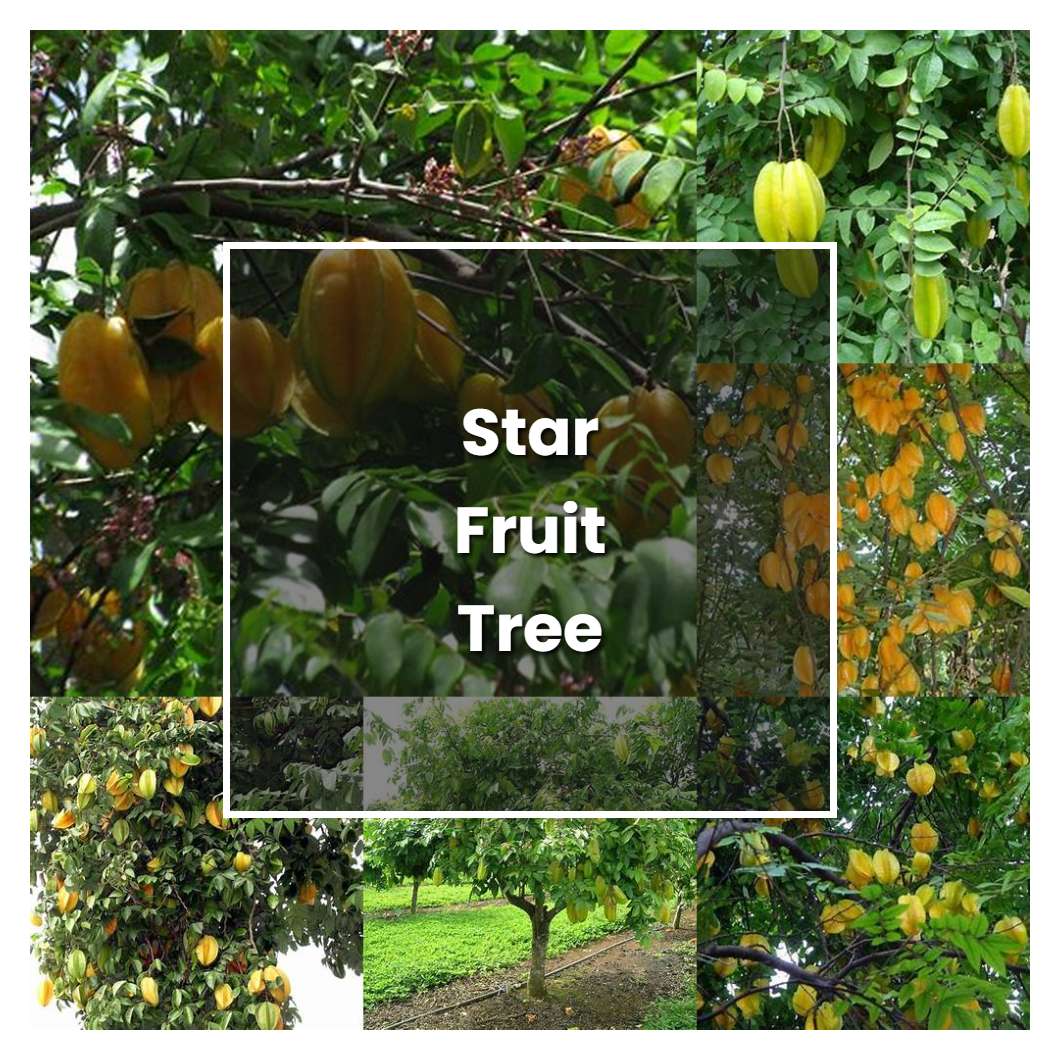Star fruit tree is one of the most popular tropical fruit trees. It is easy to grow and care for, and it produces an abundance of fruit. The fruit is delicious and has a wide variety of uses. The tree is also very attractive, with its glossy leaves and bright fruit.

Related plant:
Blue Star Juniper Tree
Related plant:
Stardew Valley Trees
About soil condition, star fruit trees like well-drained soil that's high in organic matter. The tree's roots are surface-rooting, so they don't do well in waterlogged or poorly drained soils. The tree is also somewhat salt-sensitive, so it's best to avoid planting it in areas with high concentrations of salt in the soil.
Not too different with other fruit trees, star fruit trees need a lot of sun to produce fruit. They should be planted in an area that gets at least six hours of direct sunlight each day. In areas with hot summers, it's best to plant them in a spot that gets some afternoon shade to prevent the leaves from getting scorched.
The temperature condition that is best for a star fruit tree is one that is warm and humid. The tree does not do well in cold or dry conditions. The ideal temperature range for the tree is between 70 and 85 degrees Fahrenheit.
Ideal humidity condition for this plant is between 60-70%. However, it can grow in a range of 50-80%. Too much humidity will lead to fungal growth on the plant. This plant also prefers a warm temperature.
For the fertilizer, this family of plant requires a lot of nitrogen, phosphorus and potassium or what is also called NPK. The tree will also need a good amount of magnesium, sulfur, and calcium. You can use any kind of fertilizer as long as it has a good amount of these ingredients. However, it is important to note that too much nitrogen in the soil can actually kill the tree. As for the roots, they are very sensitive to disturbance and should not be disturbed if possible.
Pruning a star fruit tree is important to maintain its shape and size. To prune a star fruit tree, first, identify the branches that need to be removed. Second, using a sharp pruning tool, cut the branches at a 45-degree angle. Finally, dispose of the branches properly.
Propagation of star fruit trees is typically done through grafting or rooting of cuttings. Grafting is done by taking a cutting from a mature tree and attaching it to the rootstock of a young tree. This method is often used to create trees that produce fruit more quickly than those grown from seed. Rooting of cuttings is done by taking a cutting from a mature tree and planting it in soil. The cutting will develop roots and can be transplanted to a new location. This method is often used to create clones of a particular tree.
Usually, the plant growth rate is incredibly fast, with some species having the potential to grow up to four feet in a single growing season. The average growth rate for a star fruit tree is between two and three feet per year. When planting a new tree, be sure to select a location that will allow for plenty of room to grow. Star fruit trees need full sun and well-drained soil to thrive.
Common problems for this kind of plant are nutrient deficiencies and pests. The leaves of the tree may turn yellow due to a lack of nitrogen and the fruit may be small and stunted if the tree is lacking phosphorus. Pests such as aphids, scale, and mealybugs can also infest the tree and cause damage.
Source:
Fruit Trees | OSU Extension Service
Types of Fruit Trees - Cooperative Extension: Tree Fruits
WSU Tree Fruit | Washington State University
